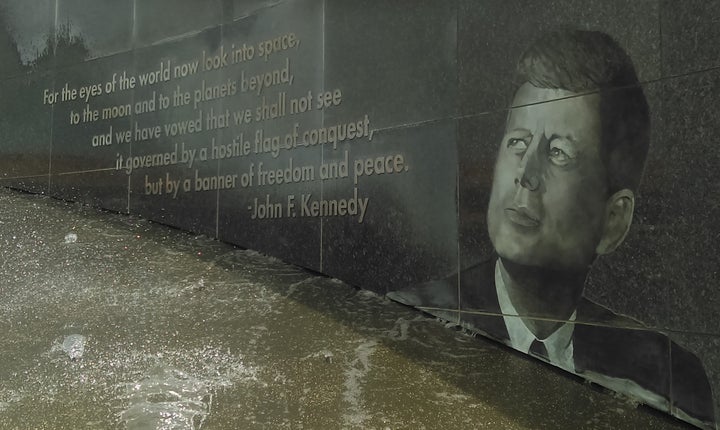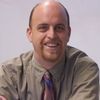
Image of Kennedy at the Kennedy Space Center, calling for the moon and planets beyond to have “a banner of freedom and peace.”
We all know about desegregation in the U.S. military, how Jackie Robinson broke the color barrier, and how African-Americans made gains in markets that were truly free. But what had been perhaps overlooked until recently was how the space race was yet another field where our country slowly, often painfully, made the transition from the era of prejudice to one where we care more about a person’s talents and choices than skin color.
This week, while taking my family to the NASA facility at Cape Canaveral, I’ve also kept up with my online college course that I’m teaching. My class, which is diverse in race and gender, is also diverse in opinion, ranging from liberal to conservative. Yet they all seem unified in attacking racism in our discussions and chats on the melting pot. Their only difference seems to be how far we’ve come, or need to go.
I’ve been to just about every space facility in America, from California, New Mexico and Texas to Mississippi, Alabama and Florida. In each of these, I’ve focused on the space adventure, the science, the spirit of the pioneer that fits with the American identity, and of course the space race, but rarely how space and race intersected.
It was a diverse crowd at the Kennedy Space Center, seeing a diverse array of today’s astronauts and engineers, as well as NASA staff. That was a probably a different story at the time of the early space program, as depicted in the film “Hidden Figures,” a story beloved by my sister-in-law, a scientist herself and leader of a Girl Scout Troop that she took to see the film in the theaters earlier this year in Georgia.
The 1950s and 1960s were, indeed, a civil rights battleground. But there was something that scared Americans even more than integration: Sputnik and the Soviet Union. Fears of domination by Communism led to a lot of changes. No longer could we “afford” the discrimination that had occurred in the past. Just as we needed an integrated military based on respect whites had developed for black soldiers, we also needed all hands on deck to face a common foe. What you know became more vital than what you looked like.
It wasn’t just the female mathematicians from “Hidden Figures” that played a role. One of my students was proud to say he was from Ronald McNair High School, named for one of the astronauts who gave his life in the Challenger Space Shuttle disaster. The videos weren’t the only ones to display diversity. You could see it among the employees as well, and the visitors that day. Workers informed me that attendance and enthusiasm was up at NASA. As I write this, our kids are watching old episodes of Star Trek for the first time, a show that broke so many barriers on TV.
Two African-American staffers told me with great excitement about the visitors from the Hidden Figures movie, as well as actor John Travolta and Vice-President Mike Pence. And one gushed about the visiting astronaut, Ed Gibson, who stayed on Skylab for 84 days. “He’s a real treasure!” she smiled.
“We discovered so much about things,” the genial Gibson, a white astronaut, told me later in the day. “We learned so much about living in space, weightlessness, and about the Sun.”
Yet we still live in an area of prejudices. One elderly person at our lunch table responded to a comment I made about our college’s desegregation years ago and growth in our African-American student population by saying “Well, maybe that will keep them out of trouble.”
As a country, we also learned to unite for a common purpose, putting prejudices and petty jealousies aside. As I saw the large enthusiastic crowds at the Kennedy Space Center, it showed that in America, we are capable of accomplishing so much, when we truly come together as one nation.
John A. Tures is a professor of political science at LaGrange College in LaGrange, Ga. He can be reached at jtures@lagrange.edu. His Twitter account is JohnTures2.
